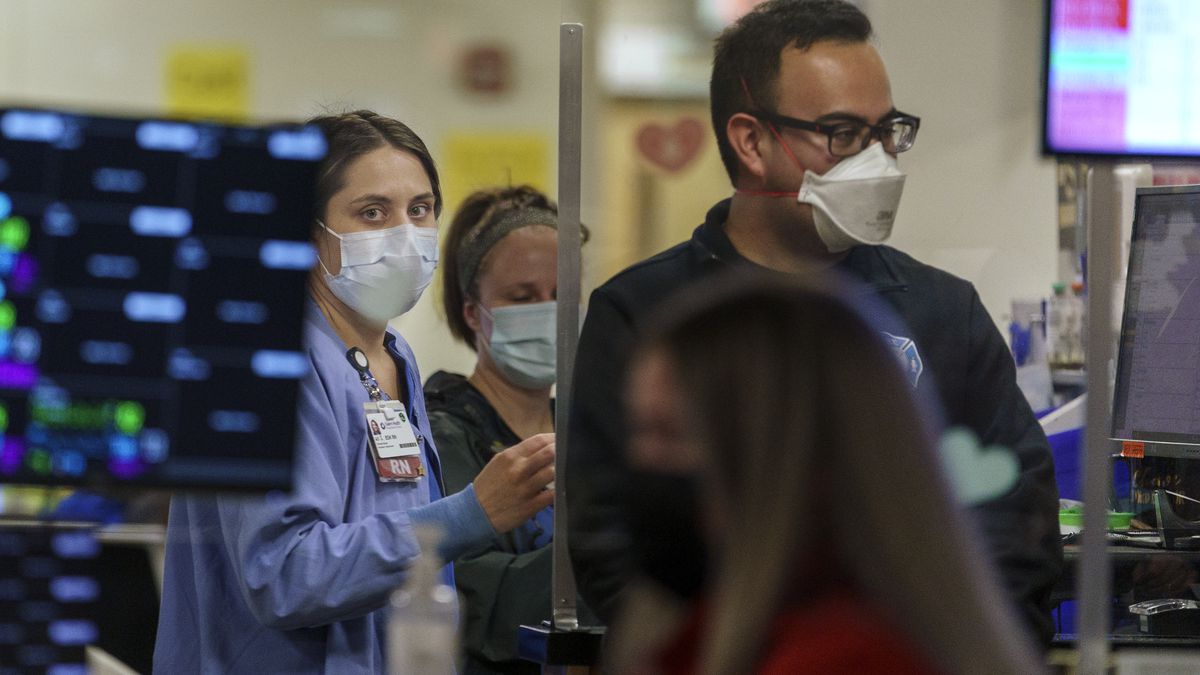
A invoice that would call for hospitals in Oregon to observe bare minimum staffing expectations for nurses and qualified nursing assistants now has solid odds of passing.
Right after months of negotiations with the state’s nurses union, the Oregon Association of Hospitals and Health and fitness Programs introduced they will drop their opposition and assist a compromise model of the monthly bill.
It’s a major reversal for a group that experienced originally warned that ratios — the nurses union’s top precedence — could drive hospitals to reduce back their solutions.
In convert, the nurses union is throwing its political bodyweight powering numerous of the clinic group’s costs, such as one that would exempt hospitals and well being systems from state laws meant to limit the expansion of health treatment charges to about 3{d589daddaa72454dba3eae1d85571f5c49413c31a8b21559e51d970df050cb0e} a year.
If HB 2697 passes, it would overhaul Oregon’s nurse staffing law and make the condition one particular of the first in the nation to cap how lots of individuals can be assigned to a single nurse. In one more to start with, it also caps the selection of people assigned to qualified nursing assistants, decreased compensated employees who aid shift clients and deliver hands-on individual care.
The Oregon Nurses Affiliation won the assistance of hospital leaders by agreeing to amendments which haven’t been posted publicly still.

FILE: Nurse Ali Strawn, remaining, evaluates sufferers coming by using ambulance to the Salem Wellbeing Unexpected emergency office in Salem, Ore., Jan. 27, 2022.
Kristyna Wentz-Graff / OPB
In accordance to the union, the most important compromises arrived in emergency treatment and psychiatric treatment. Hospital leaders argued they would be not able to meet up with the staffing ratios for these forms of care that the union experienced proposed in its authentic bill.
In the original invoice, nurses doing the job in a psychiatric device could be assigned a utmost of five clients. The compromise variation doesn’t incorporate a minimal ratio for psychiatric care.
Crisis office nurses have been some of the loudest voices pushing for staffing ratios, arguing they are getting pressured to care for far more sufferers at a time than is harmless. The Oregon Nurses Association experienced at first proposed a least of just one nurse for each individual three people in the emergency department.
The compromise version of the monthly bill will allow hospitals to assign up to 4 people to unexpected emergency section nurses, on regular, during a change, with a tough most of 5 people per nurse. Crisis department nurses doing the job with trauma clients — folks who have been in a intense motor vehicle crash or are suffering a bullet wound, for instance — could be assigned no a lot more than a person affected individual at a time.
These proposed specifications could be weaker than what is in position at present at some particular person hospitals, where staffing committees have set 3 sufferers as the utmost.
Matt Calzia, director of nursing exercise for the statewide union, explained hospitals and legislators raised valid concerns about how they would comply with crisis section staffing ratios when mass casualty occasions happen. More broadly, unexpected emergency departments are essential by legislation to stabilize any individual who will come in their doors.
“We did have to make in some flexibility for the hospitals,” Calzia reported. “That claimed, we’re also deeply anxious which is in which we’re seeing some of the greatest rates of turnover.”
For nurses doing the job in most areas of the hospital, together with the normal healthcare-surgical inpatient units that use the greatest quantities of persons, the staffing ratio would be 1-to-5 when the new legislation very first goes into outcome in June 2024. In June 2026, it will drop to 1-to-4.
Calzia explained hospitals wanted additional time to fulfill that common, specified the existing pretty tight labor sector, and ONA agreed.
Licensed nursing assistants will be demanded to care for, at most, seven sufferers throughout a working day shift and 11 on a night time shift.
Rural hospitals, which have the hardest time recruiting employees, will be equipped to request a waiver from the Oregon Well being Authority, which would allow for them to exceed the most ratios if they can get settlement from their inner staffing committee.
The compromise incorporates a routine for phased implementation of the most important improvements. If the monthly bill passes, rulemaking would begin Sep. 1, 2023. The ratios would go into influence June 1, 2024. New staffing committees would start in December 2024, and condition enforcement of the law, which will be complaint-driven, would take result in June 2025.
The two groups have agreed to function collectively on initiatives focusing on some of the most significant operational troubles for hospitals. Individuals contain $56 million in funding requests for scientific instruction for nursing college students and nurse educator spend, and a endeavor force to analyze how to deal with sufferers who continue to be in hospitals for a longer time than required owing to difficulties getting a area to discharge them.
The chart down below exhibits the ratio of clients to nurses by section as integrated in the amended invoice.
| Division | Amended monthly bill |
|---|---|
| ED: Trauma | 1RN:1 patient |
| ED non-trauma | 1RN:4 patients averaged in the device about the change. 1RN:5 clients max |
| ICU | 1RN:2 individuals |
| IMCU/Step Down | 1RN:3 sufferers |
| Labor and Shipping and delivery Active Labor/Problems | 1RN: 1 individual |
| L&D Not energetic labor | 1RN: 2 sufferers |
| Mom/Newborn Couplets | 1 RN: 4 couplets |
| PACU | 1 RN: 2 clients |
| OR | 1 RN: 1 affected person |
| Professional medical Surgical | 1RN:5 sufferers until eventually June, 2026 1RN: 4 individuals immediately after June 2026 |
| Oncology | 1 RN: 4 sufferers |
| Telemetry | 1 RN : 4 sufferers |
| All Psychiatry | D by staffing committee |
| Outpatient below clinic license | TBD by staffing committee |






